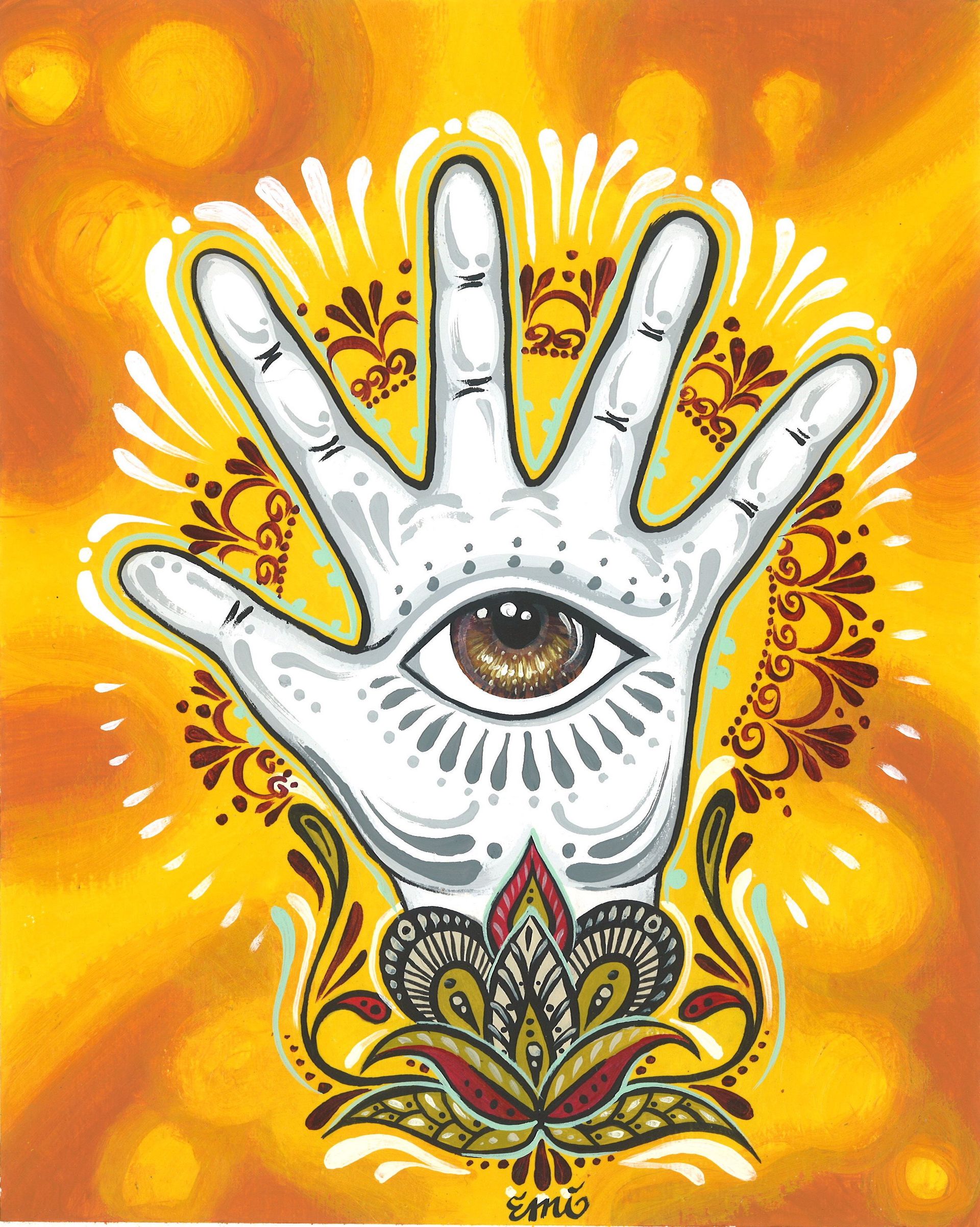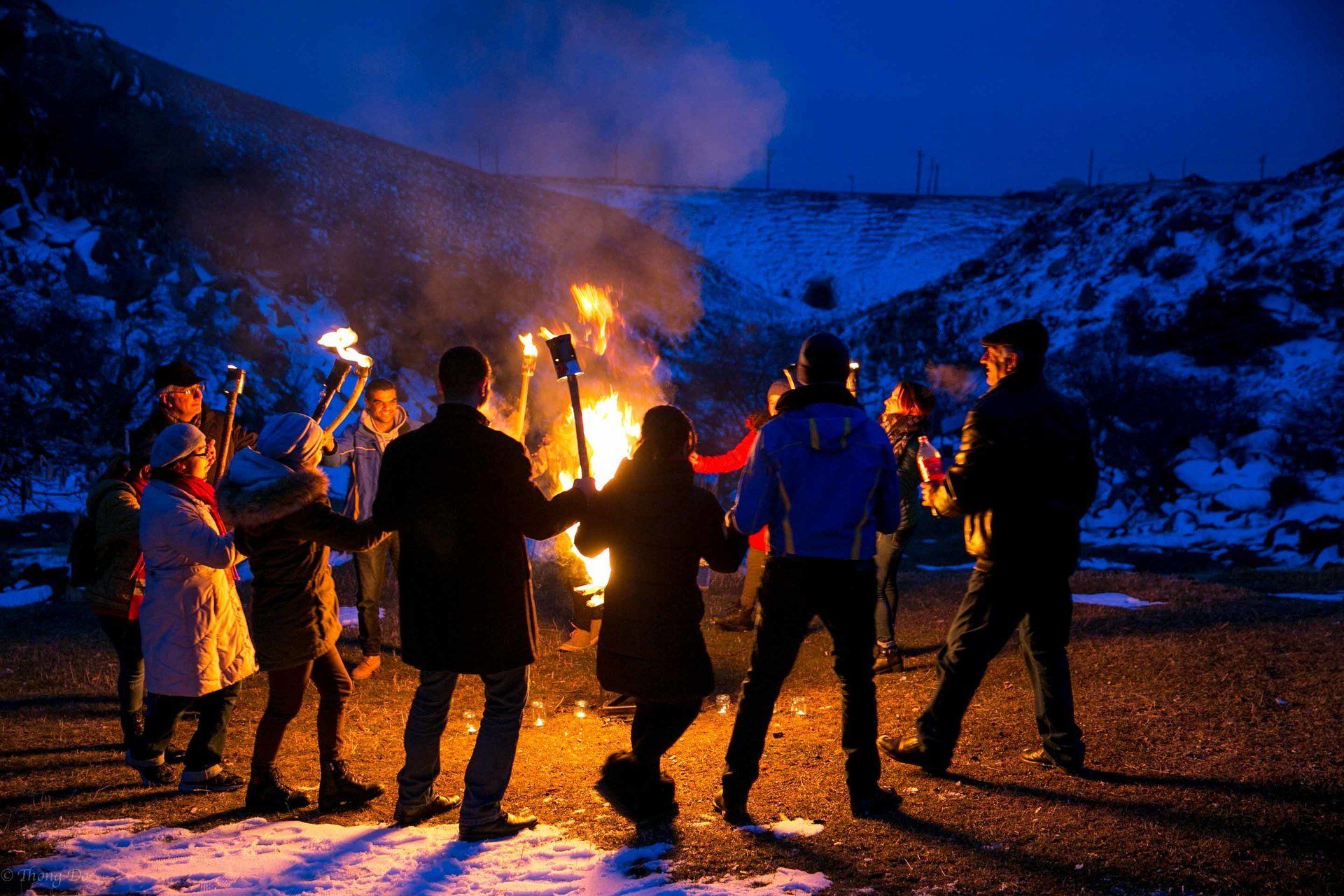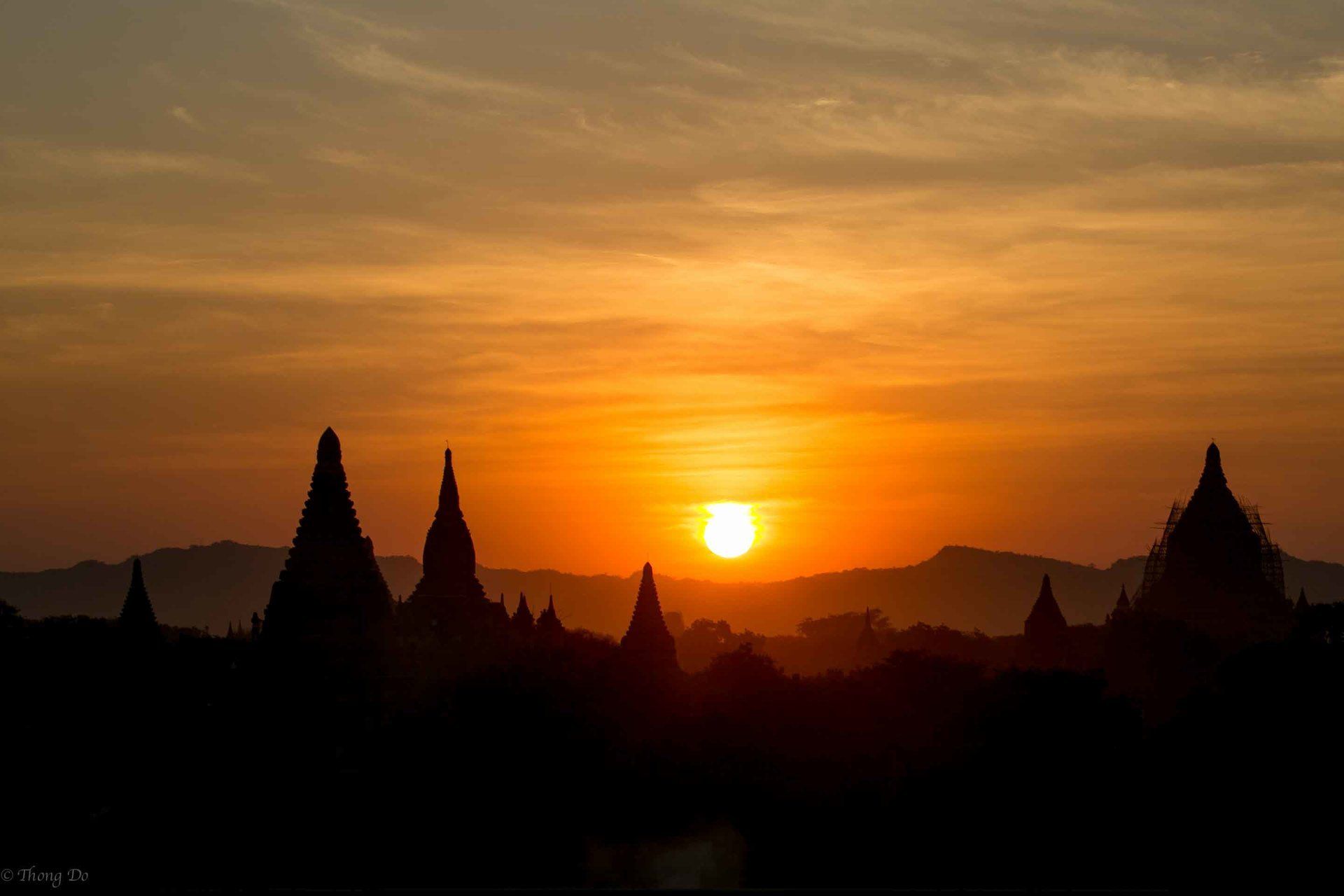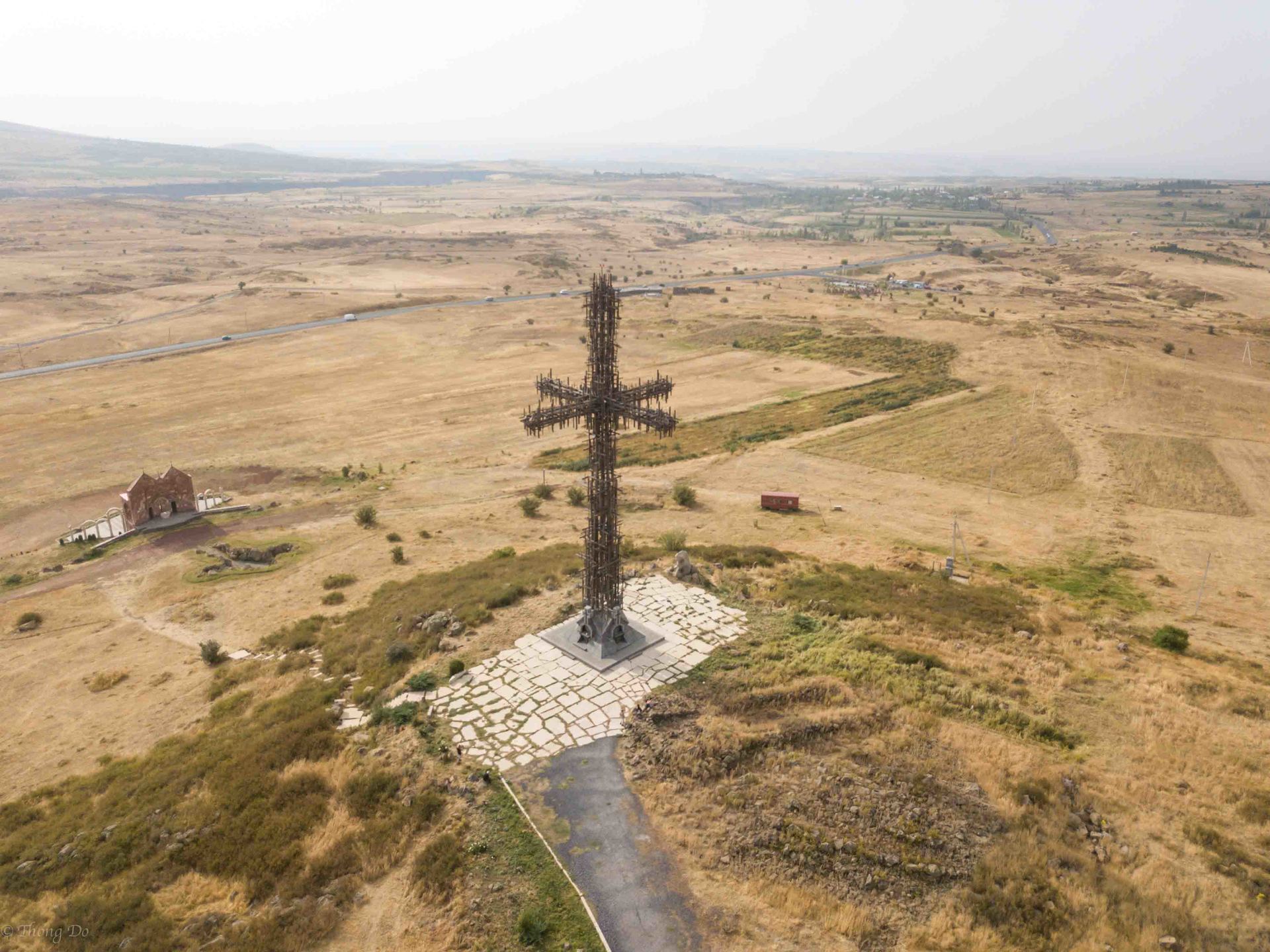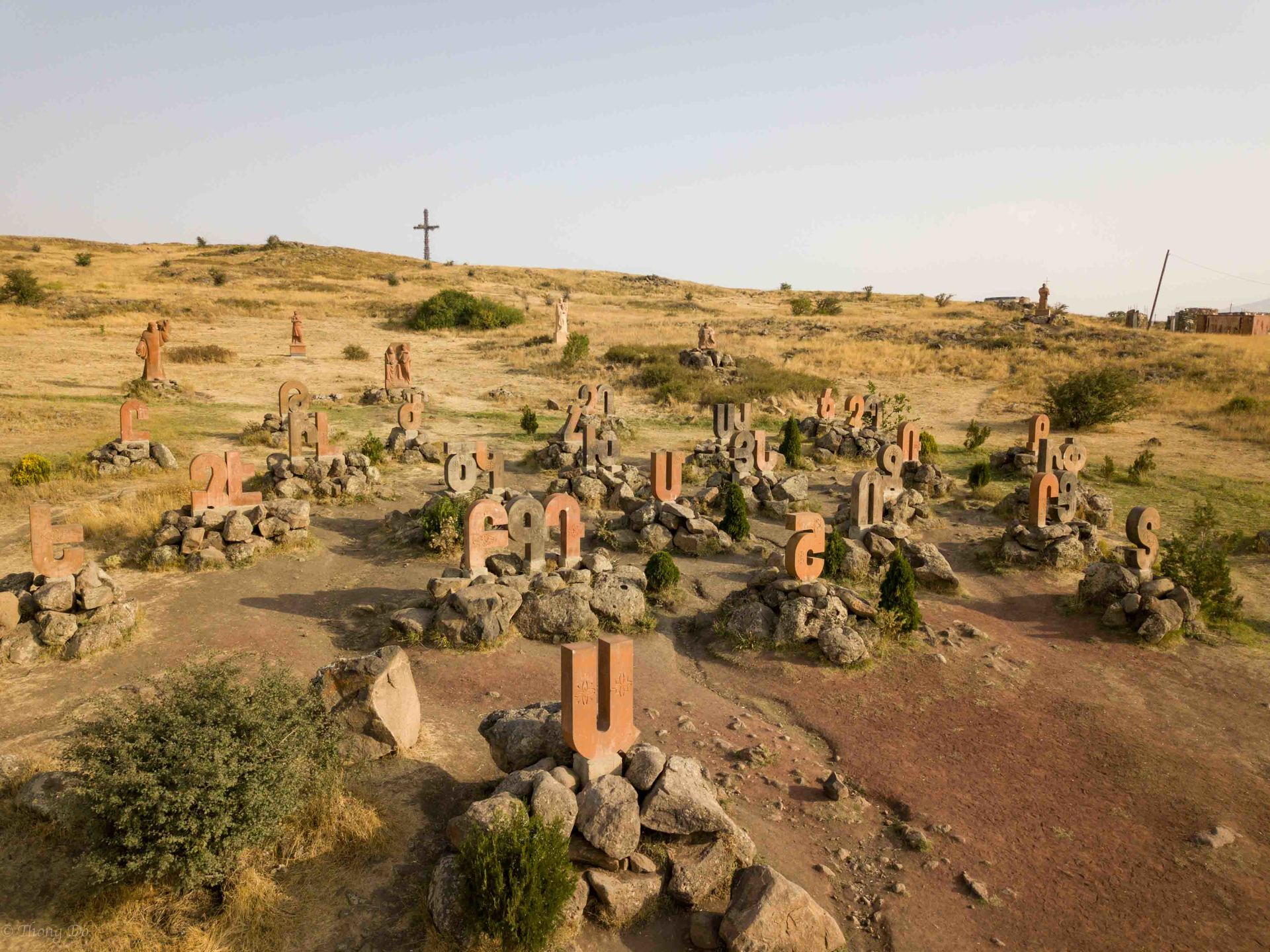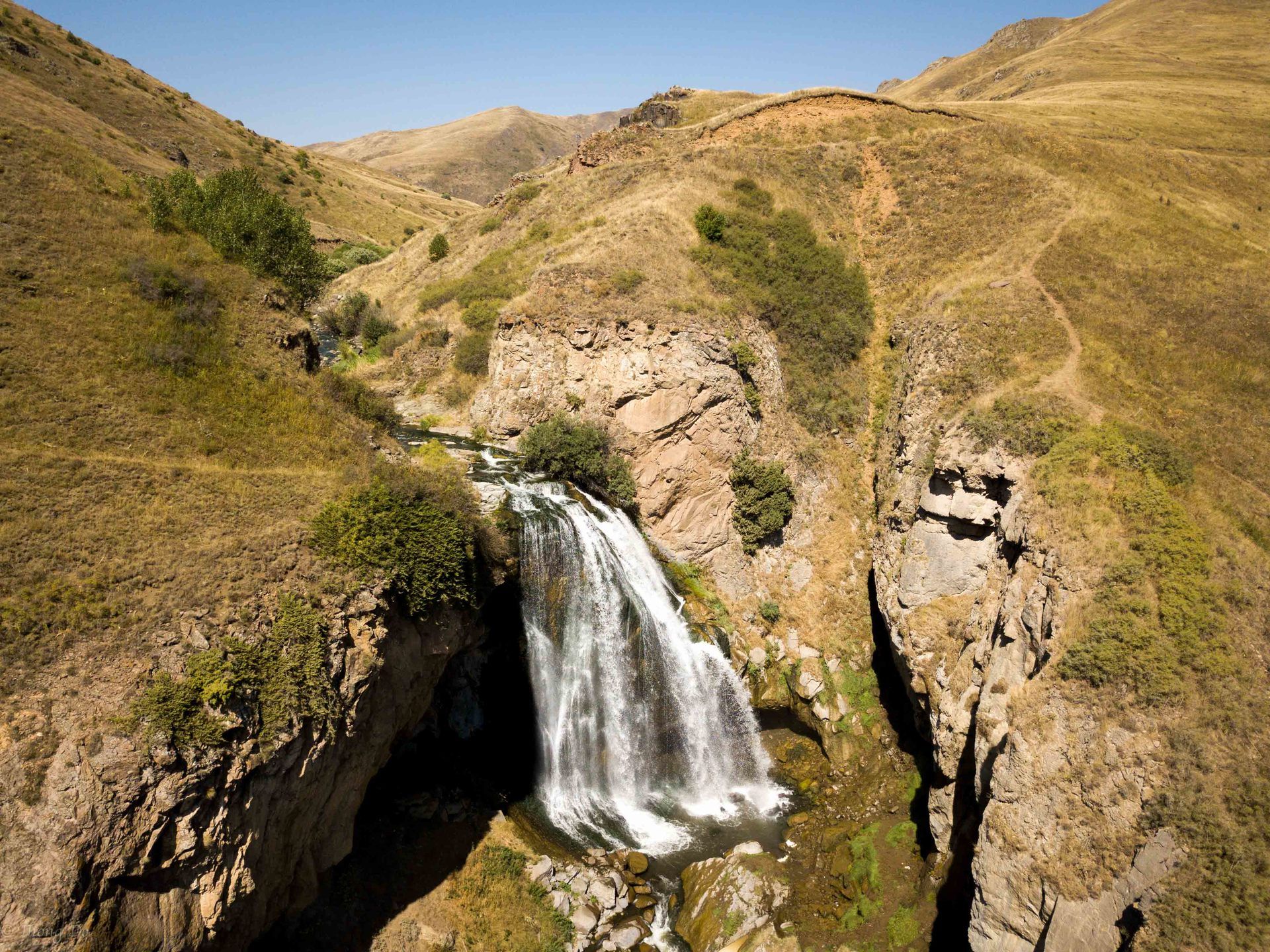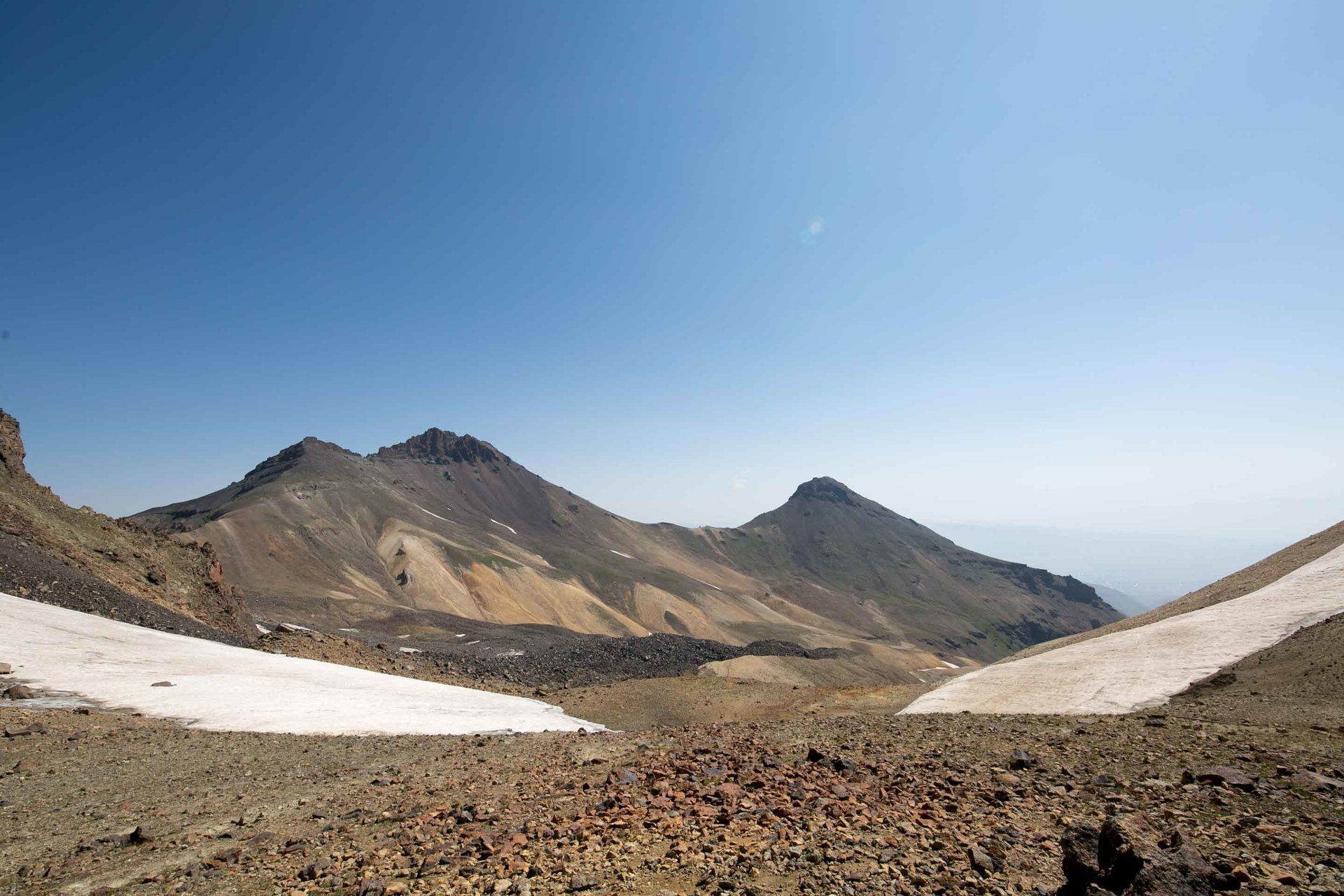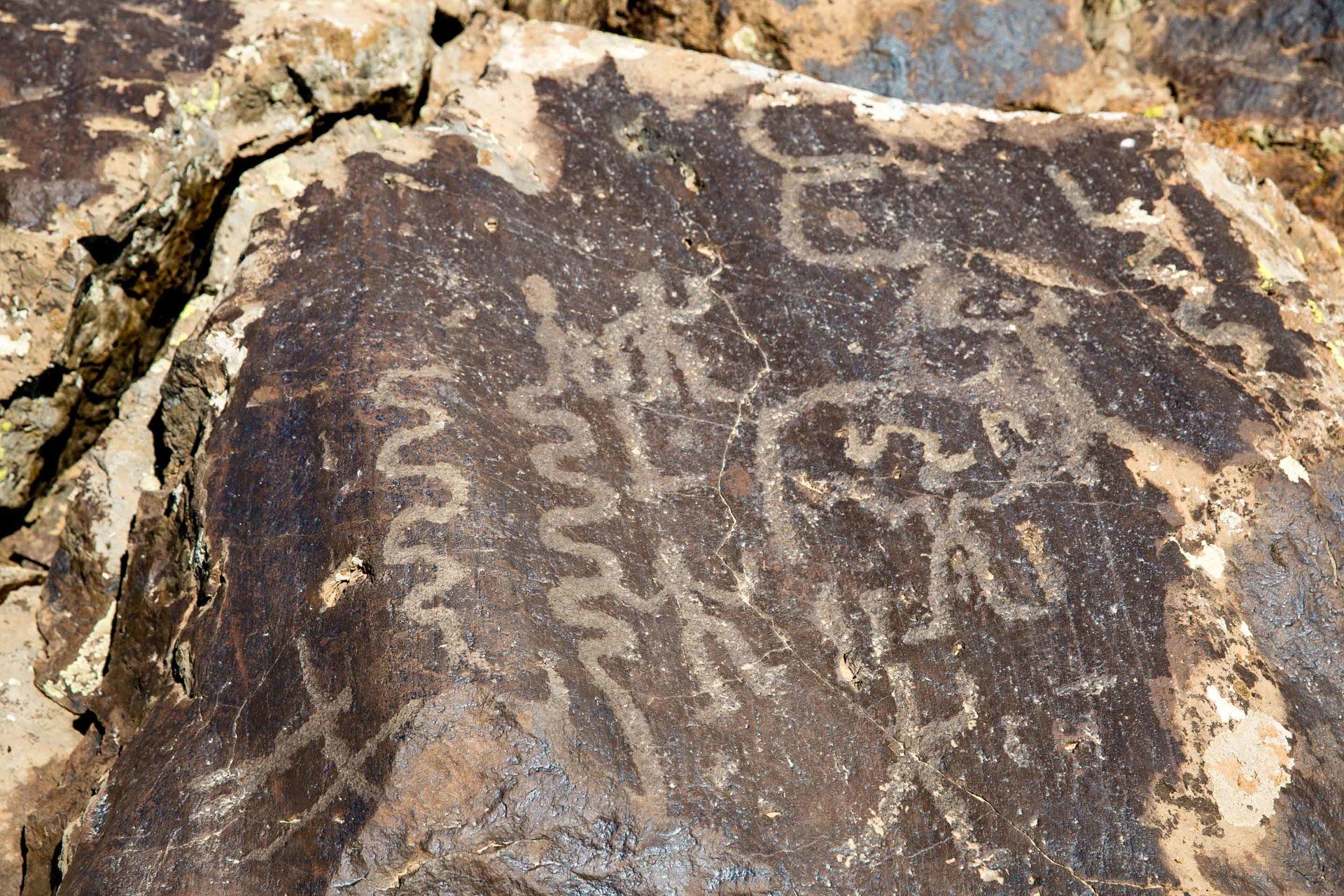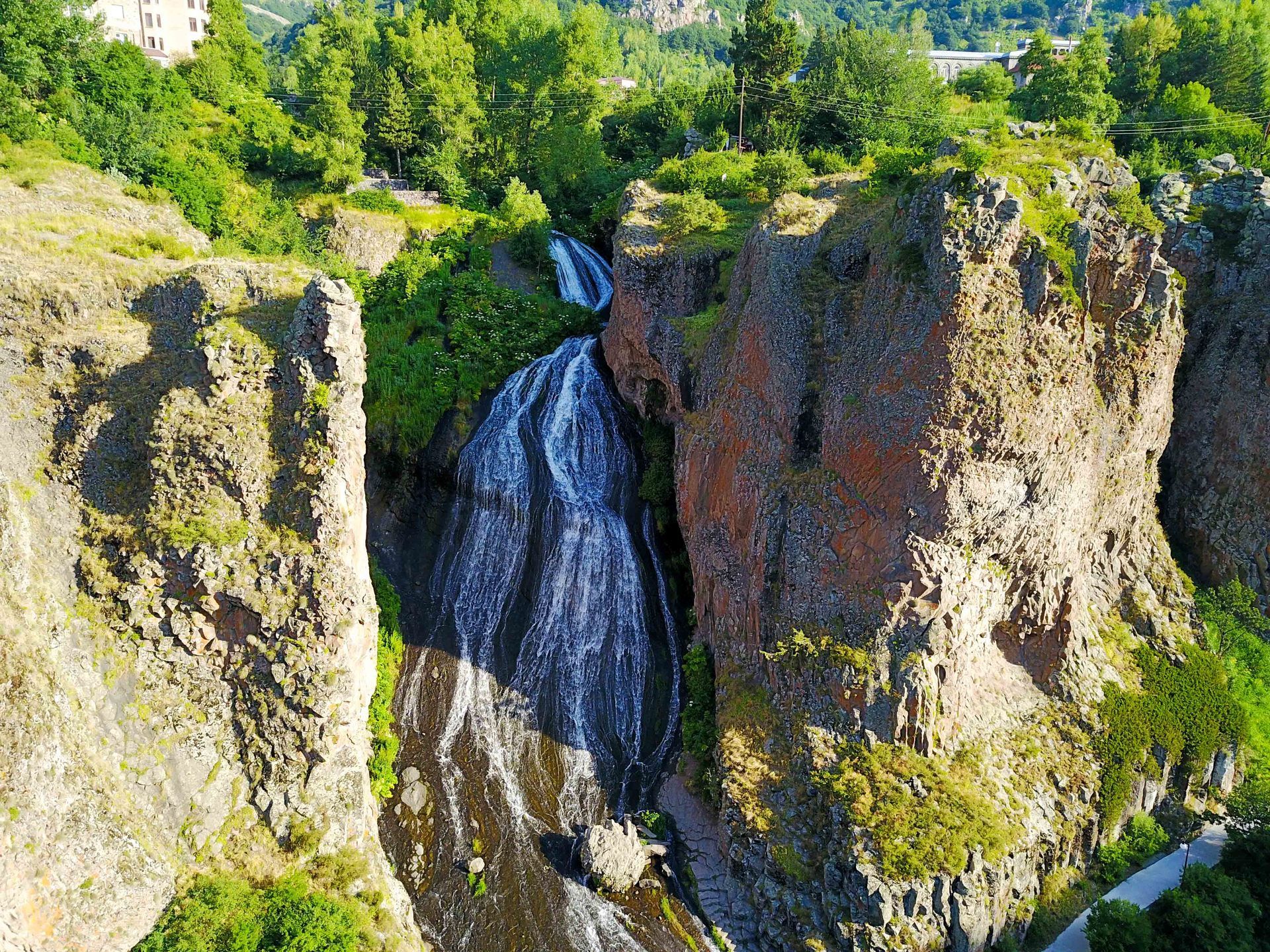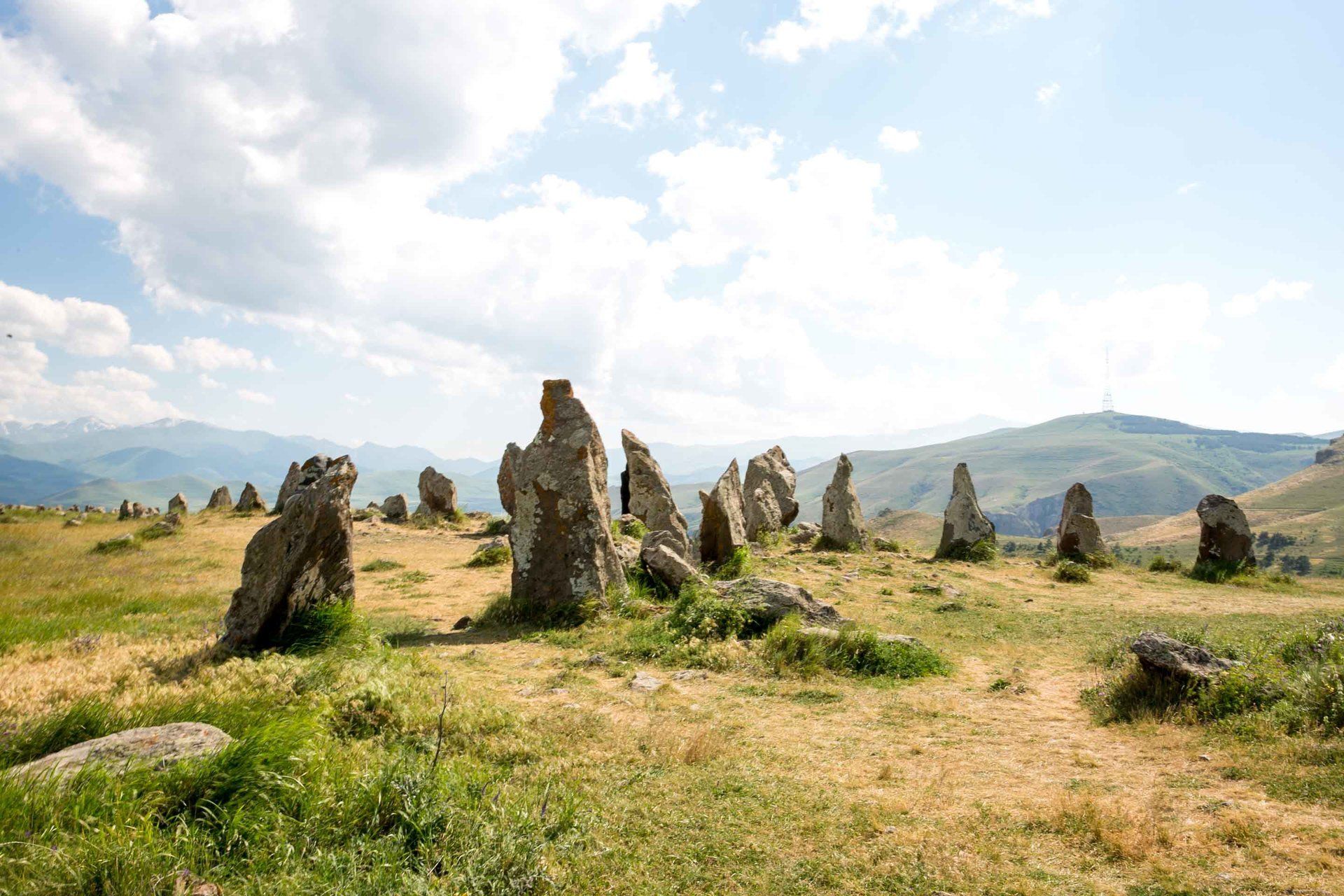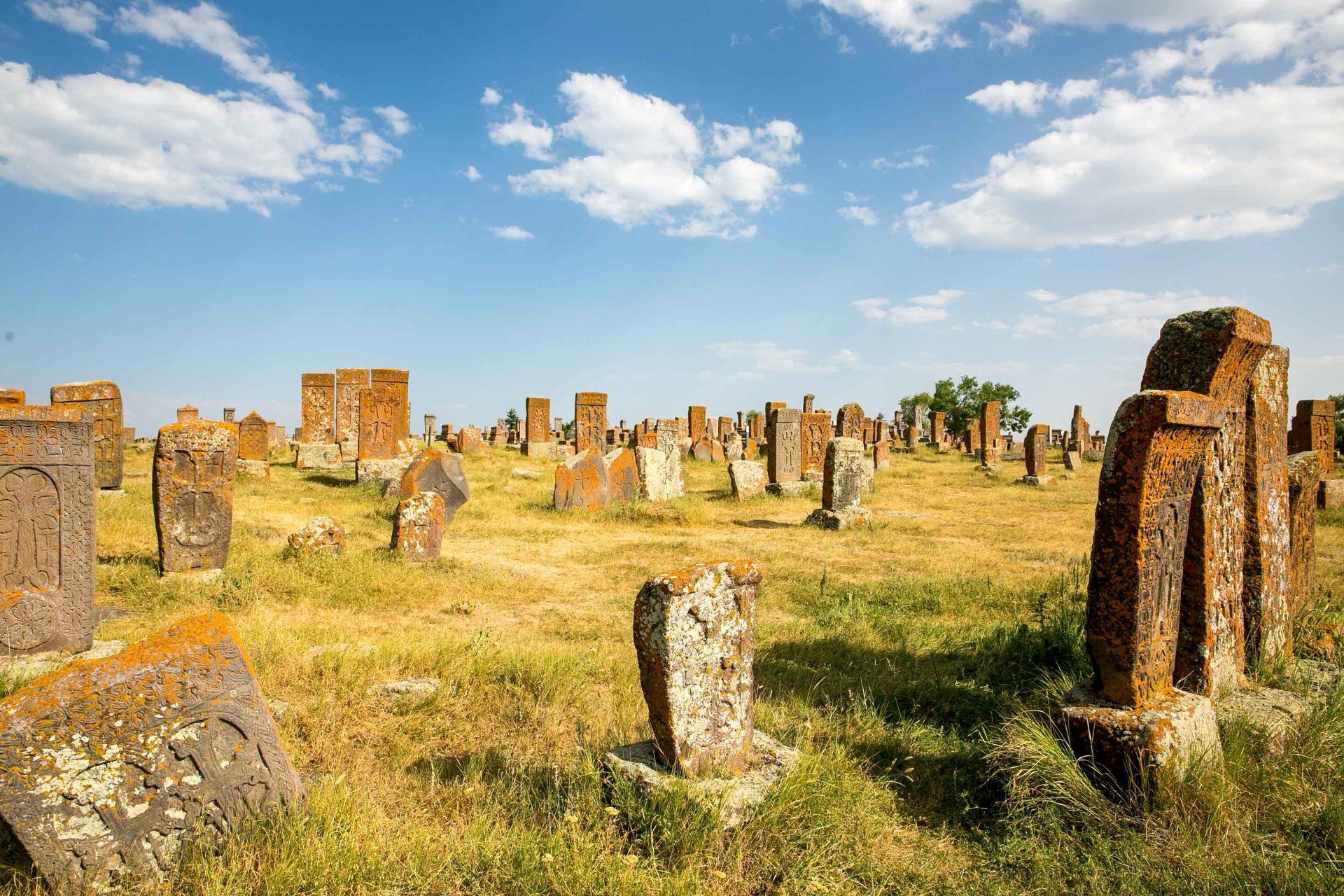What to see in Bagan, Myanmar: Part 1 The Ananda Temple and Shwezigon Pagoda
- By Thong Do
- •
- 15 Aug, 2017
- •
By far the most beautiful and memorable place to visit in Myanmar is the ancient city of Bagan. This was the only place that stuck out to me initially when I saw travel shows do episodes on this country. This was once the capital of the mighty Bagan Empire that governed most of present day Myanmar. At the apex of the empire’s power between the 11th and 13th century there were more than 10,000 temples, shrines, stupas, and pagodas. Now, there are over 2,000 left standing in various states of repair. Scattered across a 50 square kilometer arid plain this area is great place to explore on your own or with a guide.
I had the great fortune to spend time about two weeks in Myanmar in early January of 2017 and was able to spend about 3 days in this area. The weather was warm and the overall scenery and vibe was great. I spent the first day with a tour guide taking me to the major sites and then I went exploring on my own in the vast open space. The amazing thing is that there is only supervision at the major sites and all the smaller and lesser known stupas and pagodas. This enabled me to walk around on top of these pagodas and get some amazing photos.
Bagan is separated into two areas. The first is referred to as Old Bagan where a nice portion of the ancient temples, pagodas, and shrines are surrounded by a massive stone gate. New Bagan is referred to where all the newer hotels, restaurants, and shopping areas are. To enjoy the beautiful temples and stupas here you must pay for a Bagan Archaeological Pass for small fee that you can purchase immediately at the airport or at the any of the major temples. The pass is good for a few days and you must carry it with you at all times because the staff at the major temples will ask to see it. I made the mistake of leaving it behind on my free days and had to pay again.
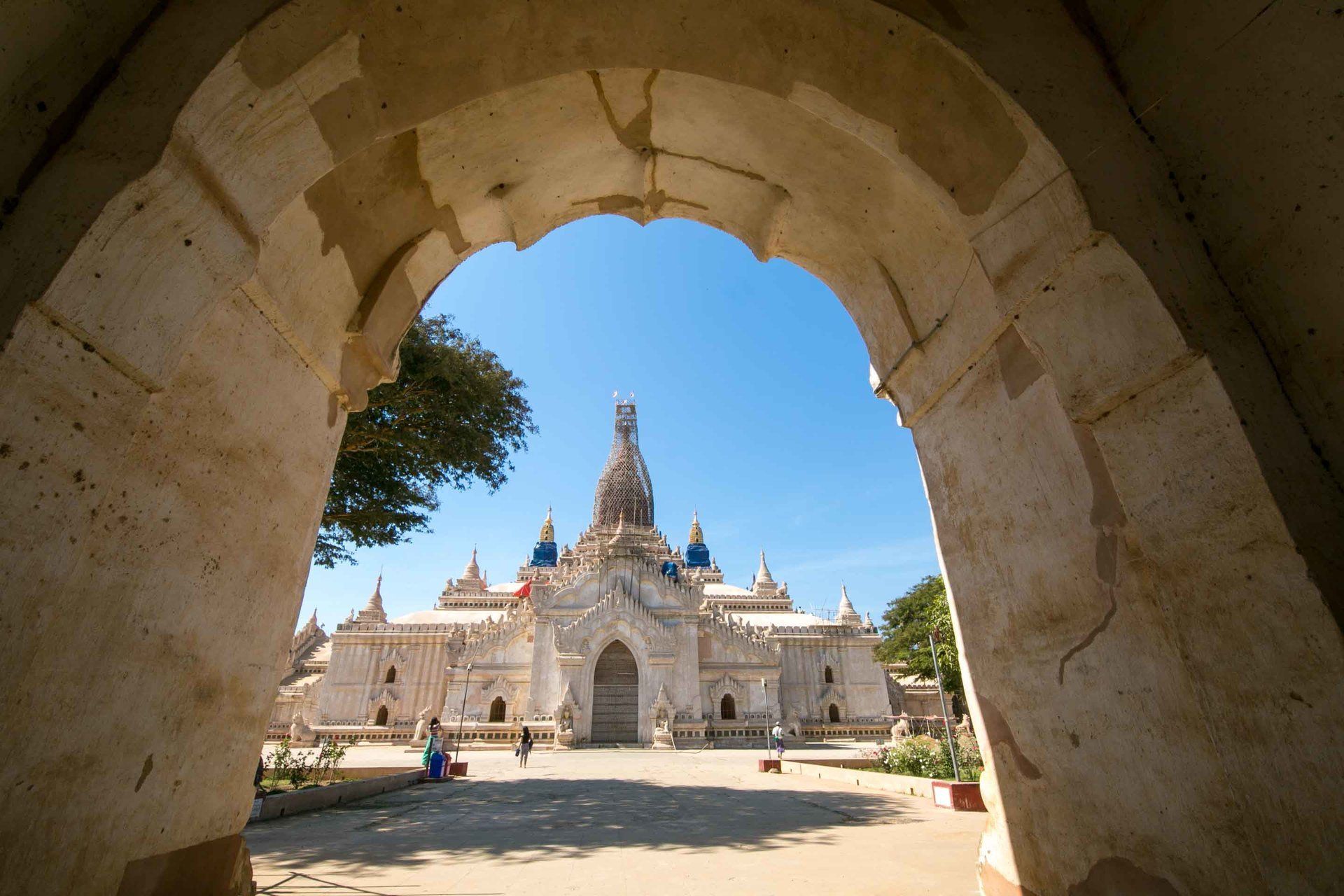
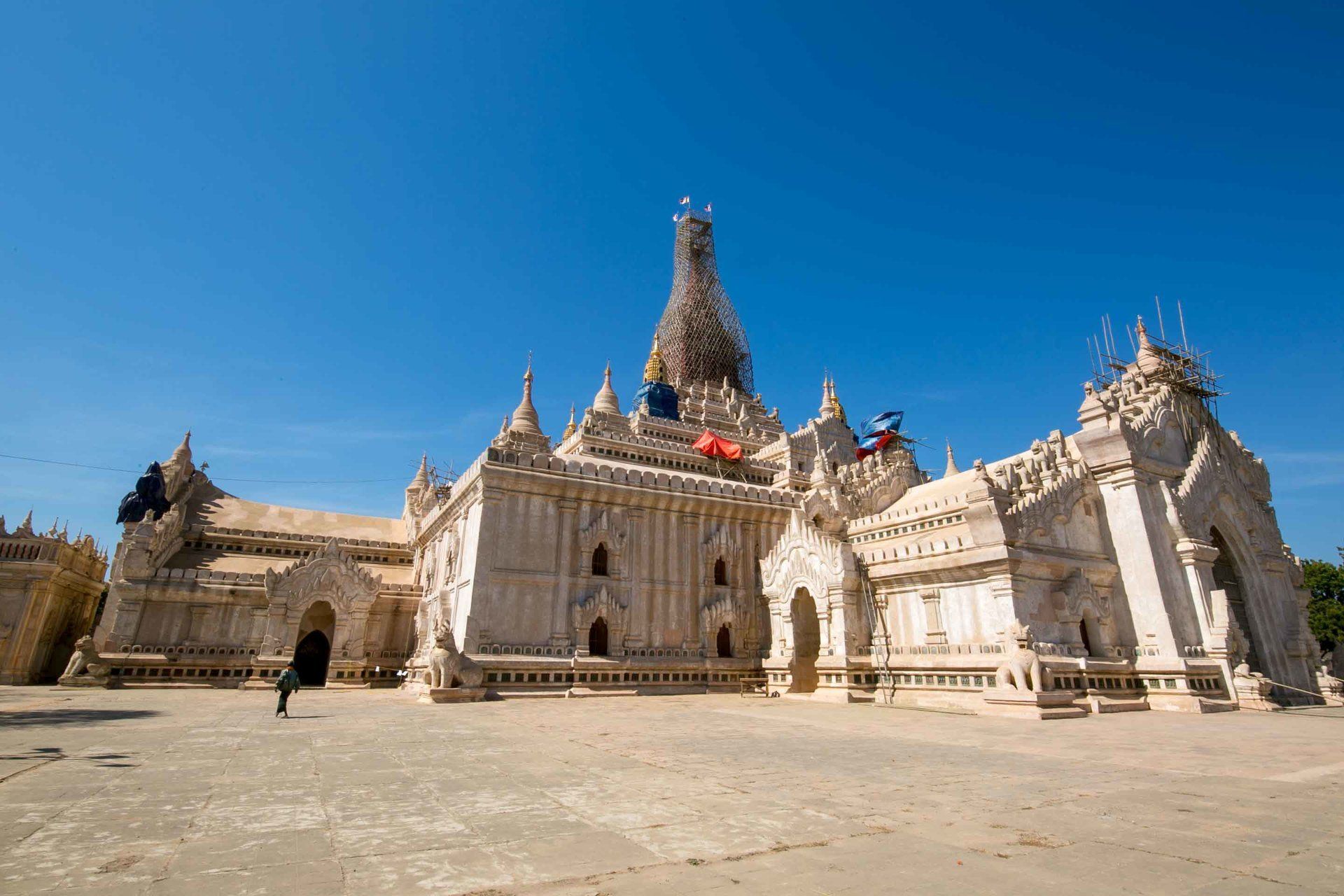
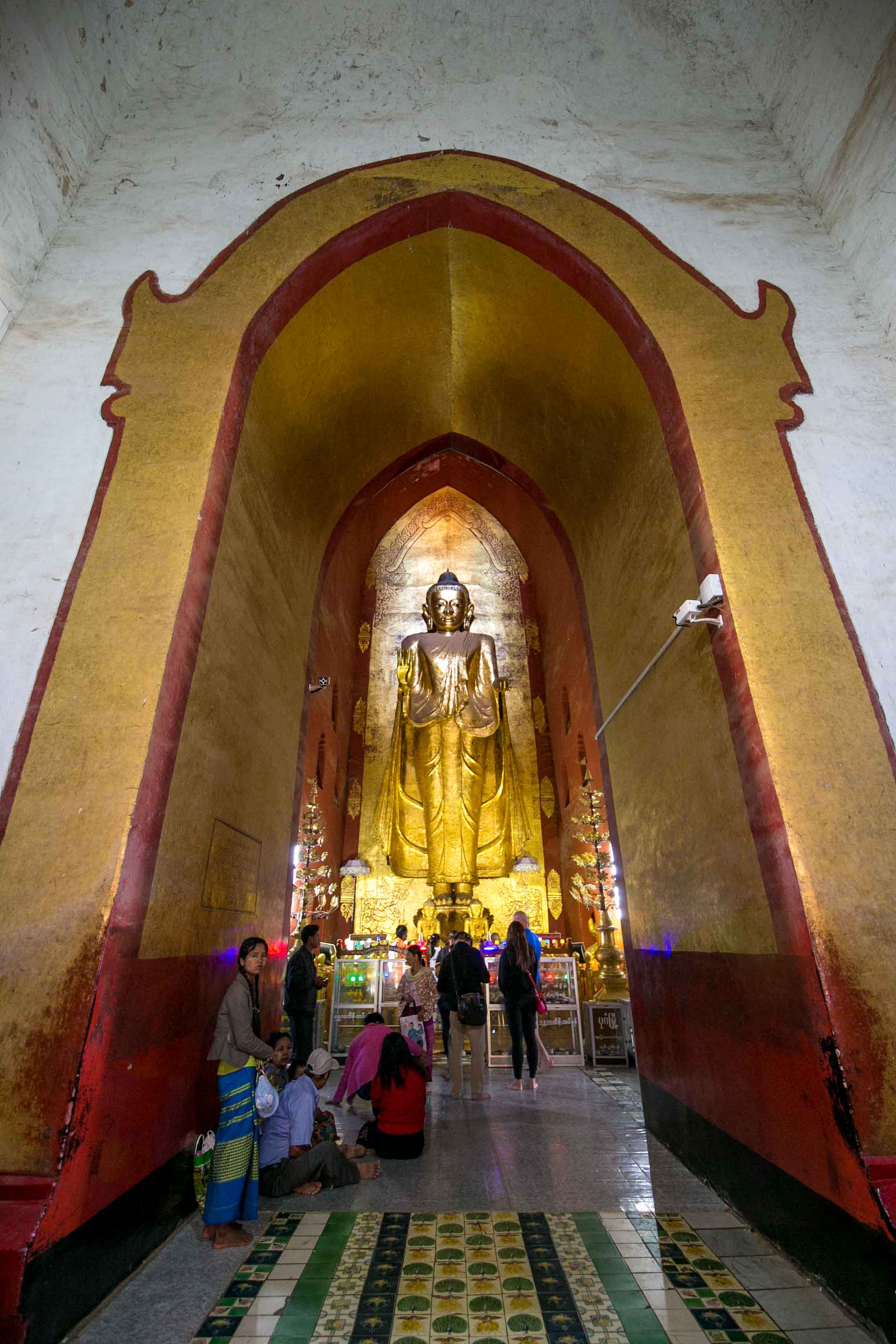
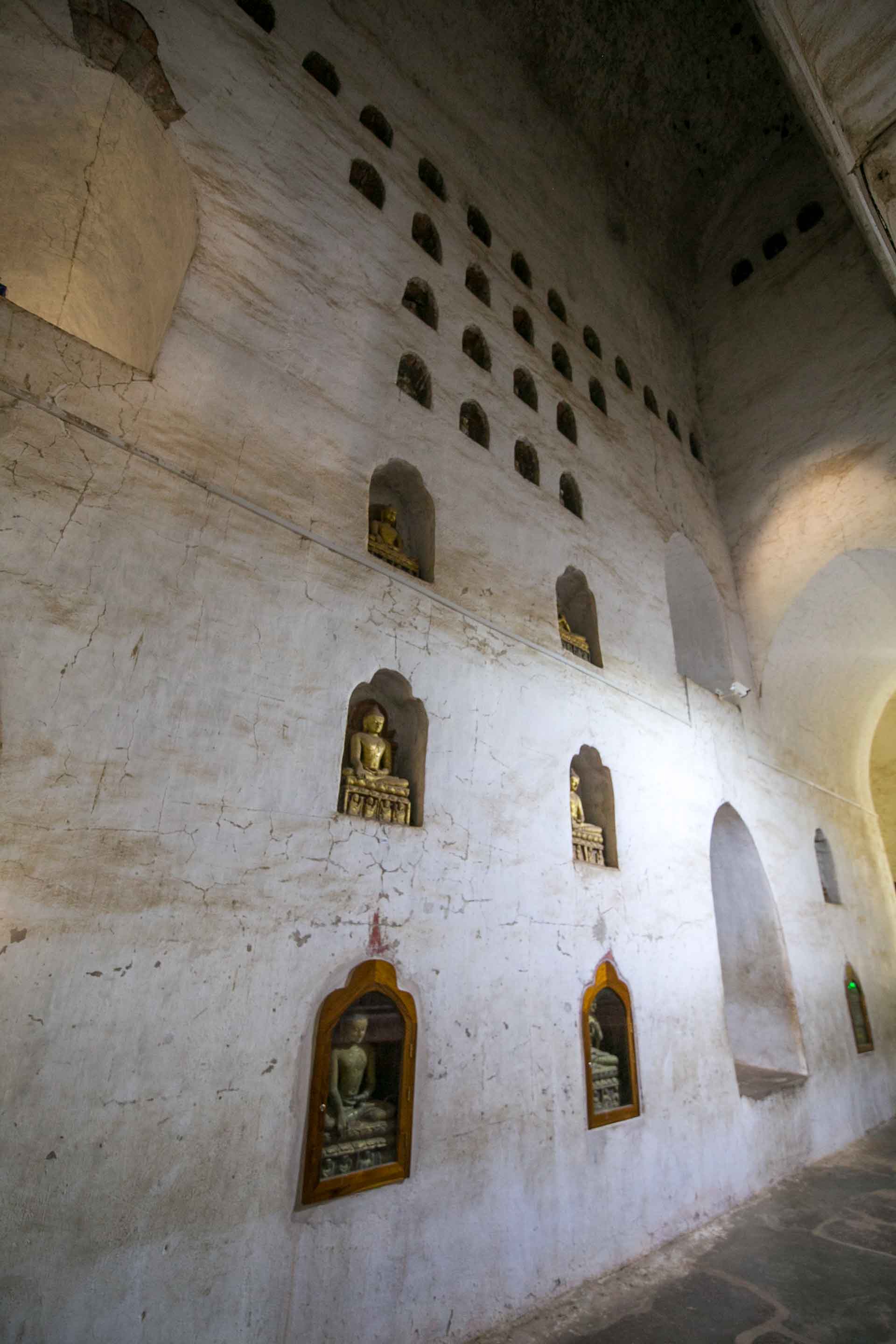
One of the must see places in the Old Bagan area is the Ananda Temple. One of the most revered by Burmese Buddhists this large temple is easily recognizable by its corncob tower. Also referred to as Ananda Pahto/Ananda Phaya this temple was built towards the end of the early Bagan era in 1105. The architectural design displays Mon and North Indian influence. The Ananda Temple is well known for its lavish entranceways that lead to four giant guilded Buddhas standing in large shrines, interconnected by corridors that are designed with various sculptures and paintings. The Buddha statues are over 9.5 meters tall and are facing north/south/east/west and are standing in different positions. My guide showed me a little trick and if you just look closely at any of the Buddha statues from various distances, you can see the eyes just staring out you!
The only way to describe this temple is opulent and extravagant. The upper terraces are not available to the public but pictures of it show a high degree of detail and elegance. There was a bit of renovation going on when I was visiting here but it was still a site to see. There are over 1,000 stone sculptures that are placed along the outer corridors.
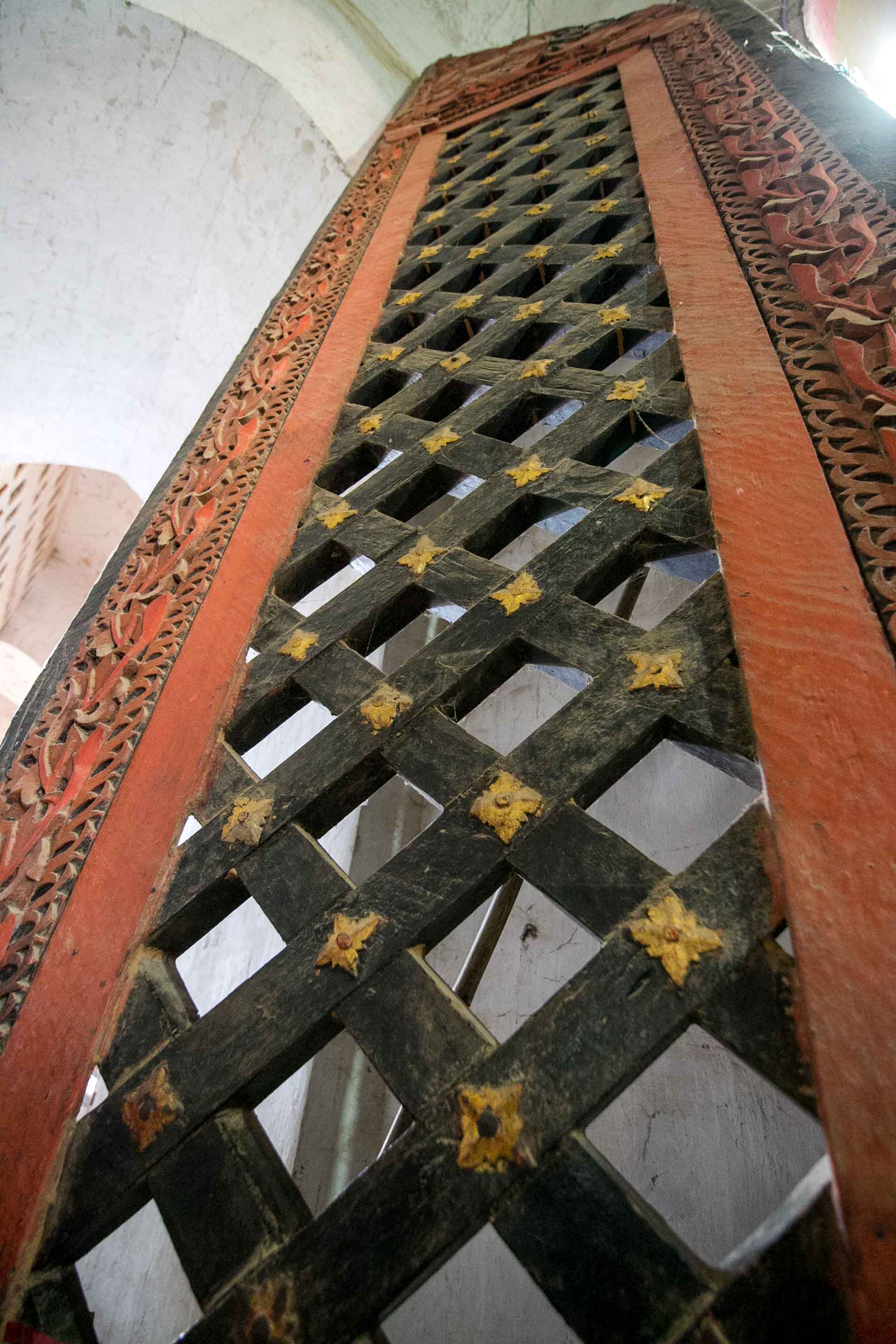
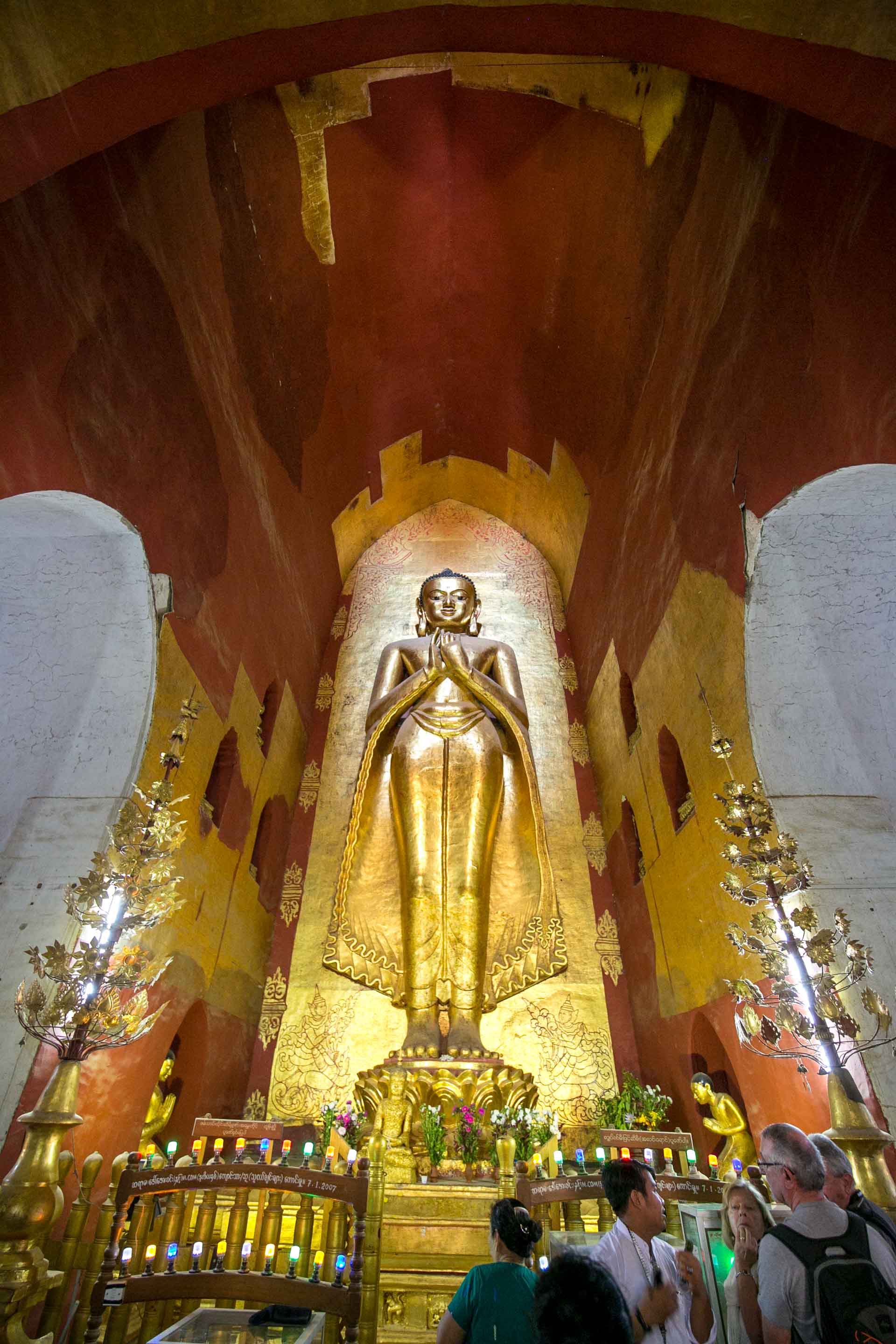
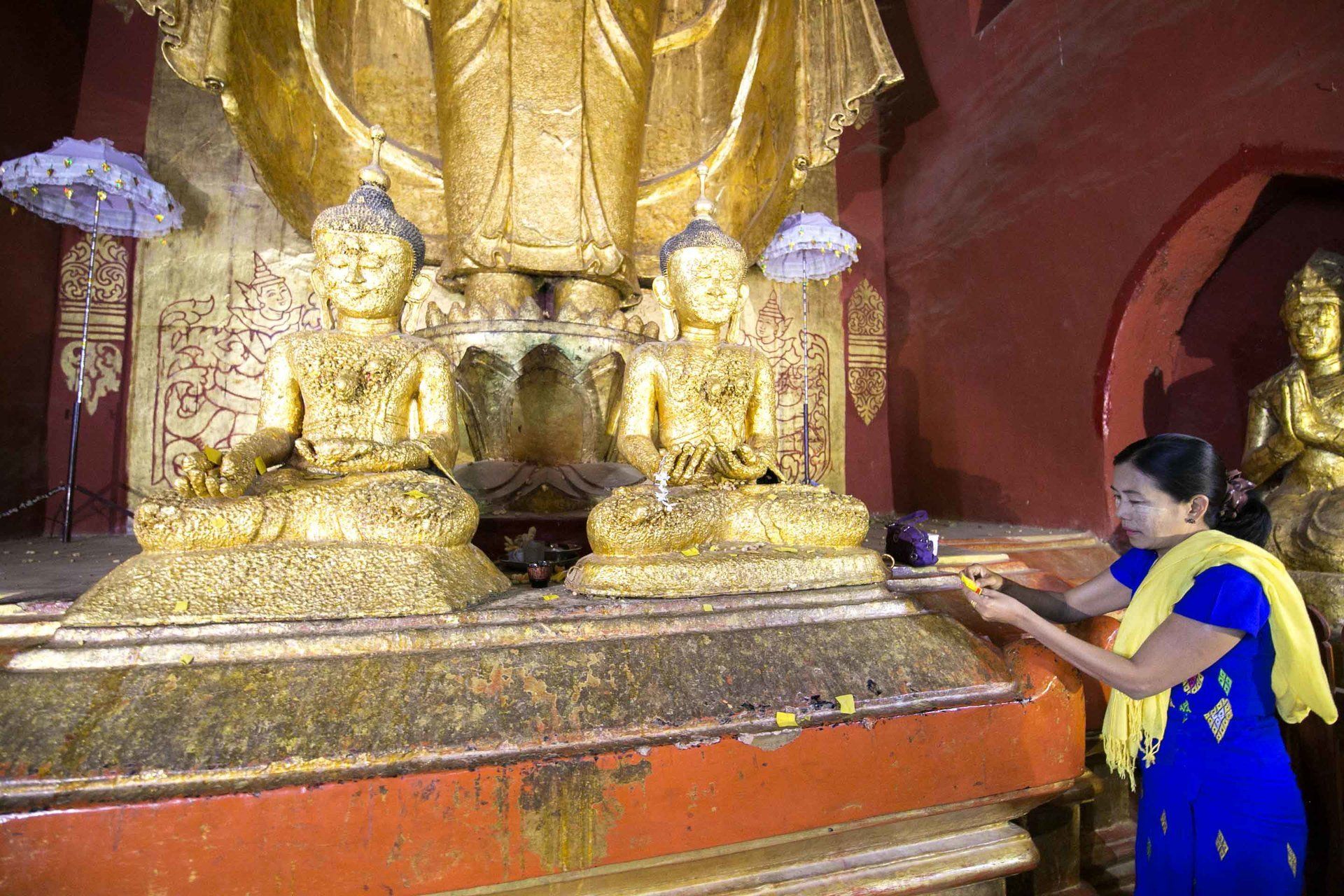
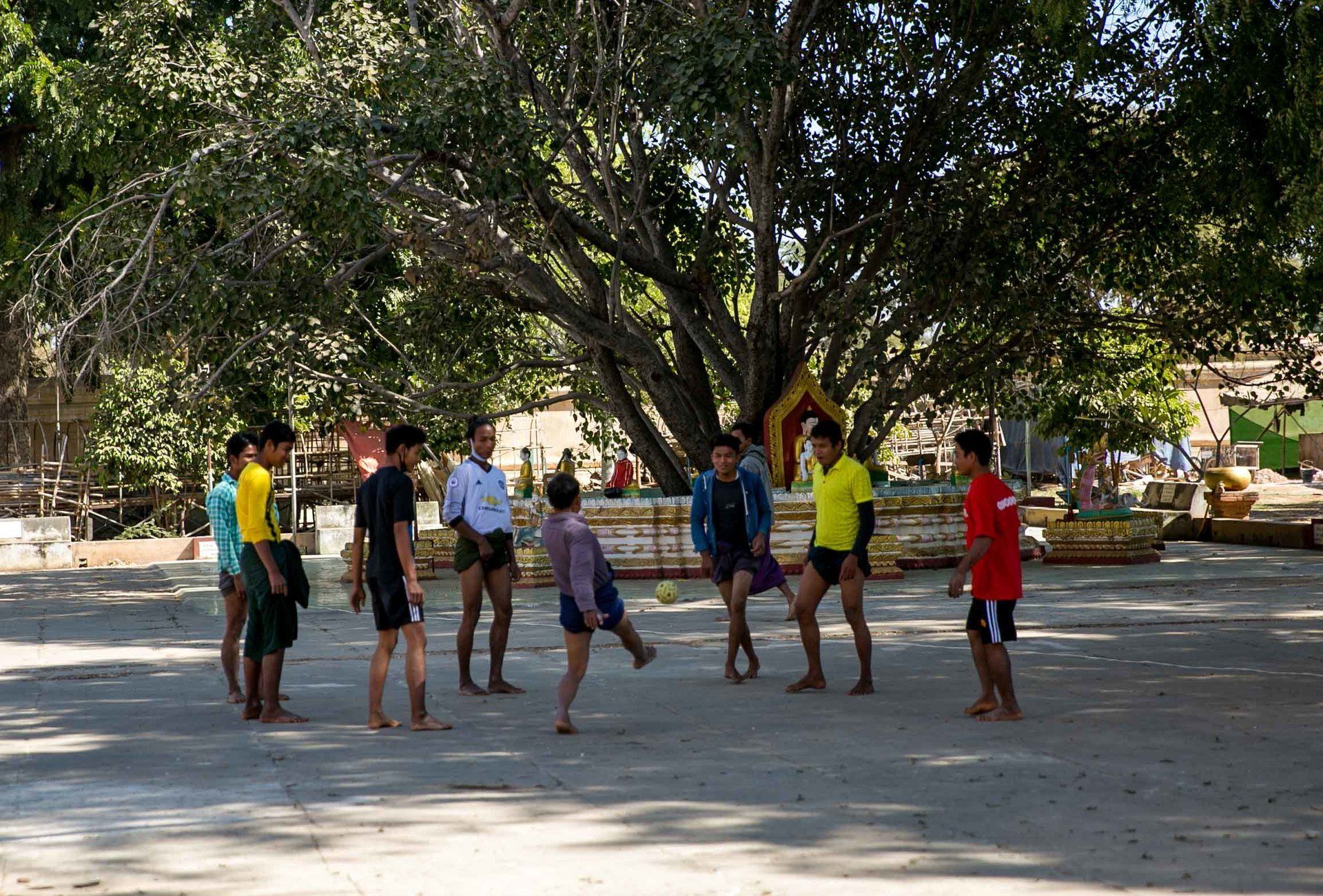
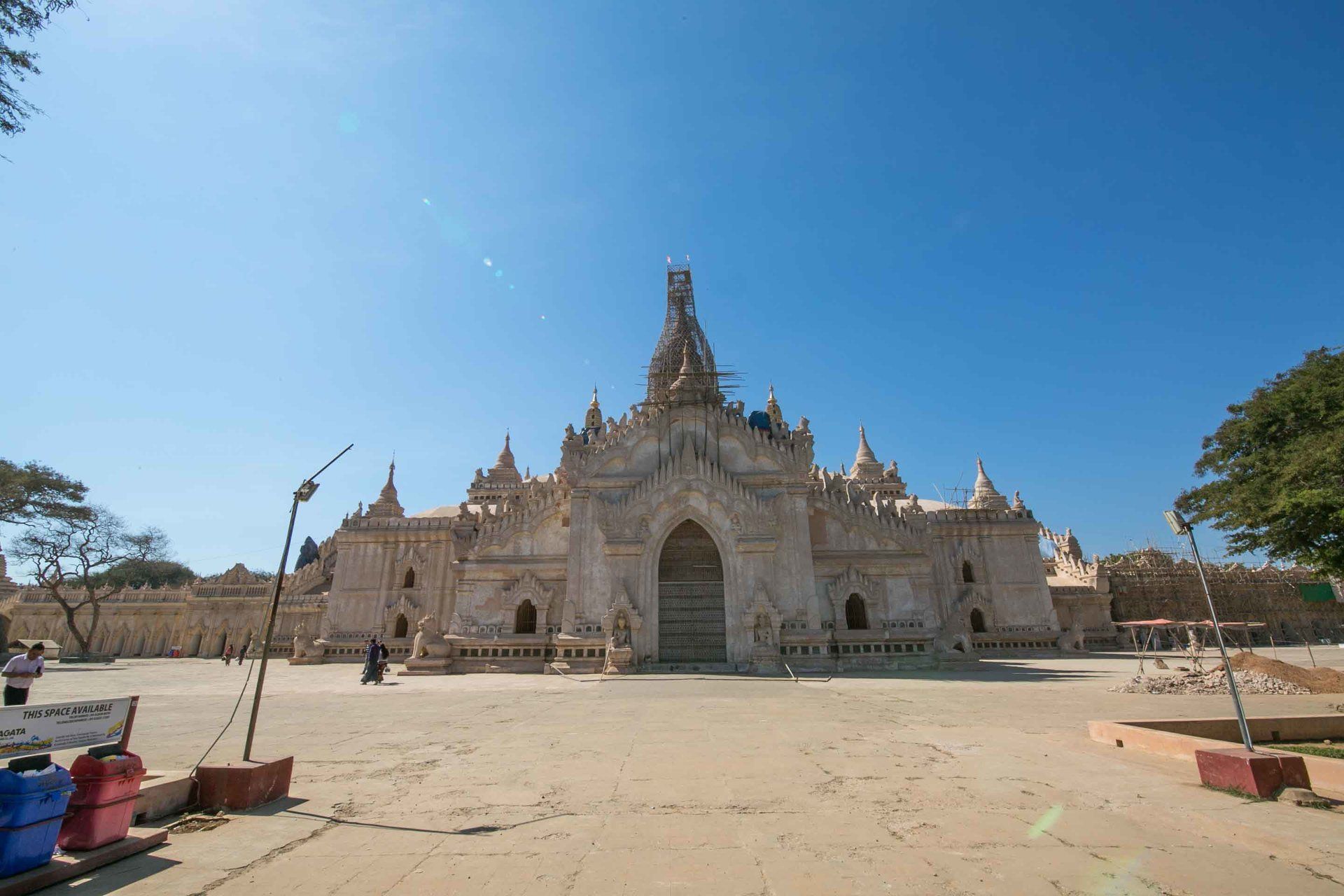
There is also a local legend about the Ananda Temple too. Near the end of the 11th century eight Indian monks went for a visit to Bagan and were granted an audience by King Kyanzittha. The monks told the king about an impressive and legendary cave temple in the Himalayas and created a vision for the king to see the temple and snow background. The tale told by the monks left such an impression with the king he decided to have it replicated in Bagan. According to the legend, after the temple was constructed, the king had the architects executed, to ensure it would remain original!
The other interesting detail about the Ananda Temple is the Jataka plaques. The base of the temple and six terraces contain the largest collection of placques of all Bagan temples. They are glazed terra-cotta tiles with depictions of tales from the Jataka mythology. The terraces contain plaques that depict different scenes from a particular tale. The first three terraces contain 537 plaques in the ancient Pali language and the upper terraces contain 375 plaques with a description in the Mon language.
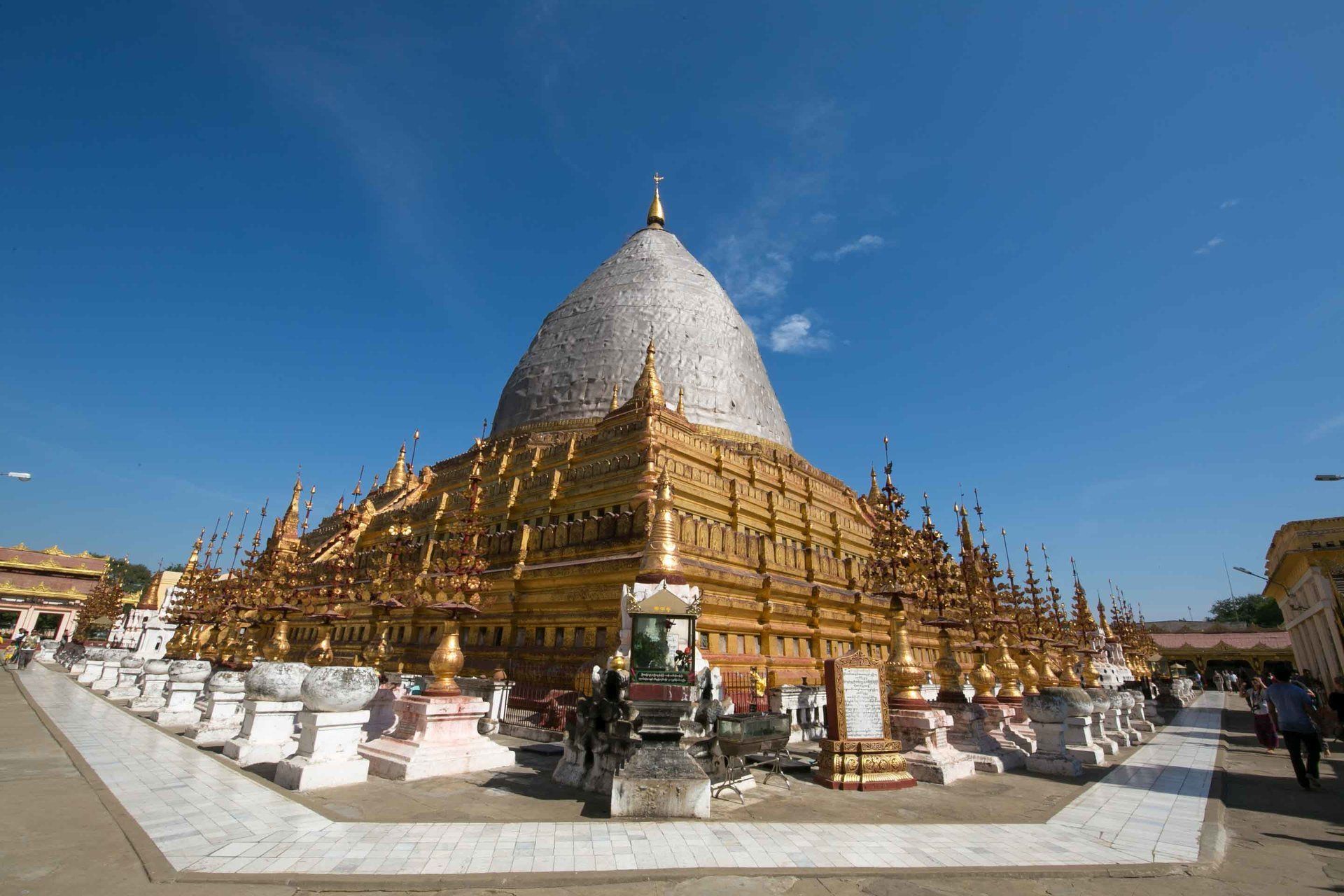
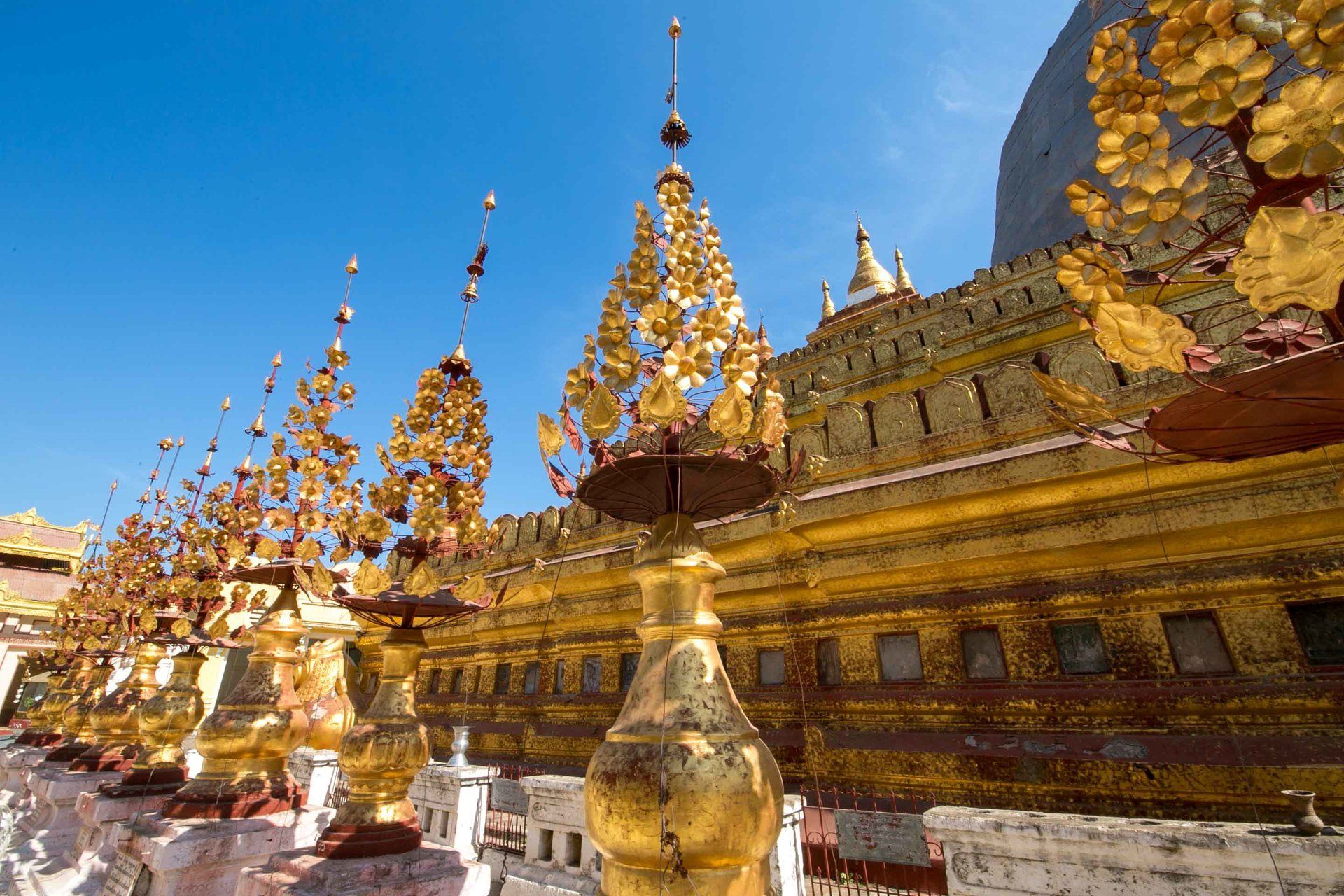
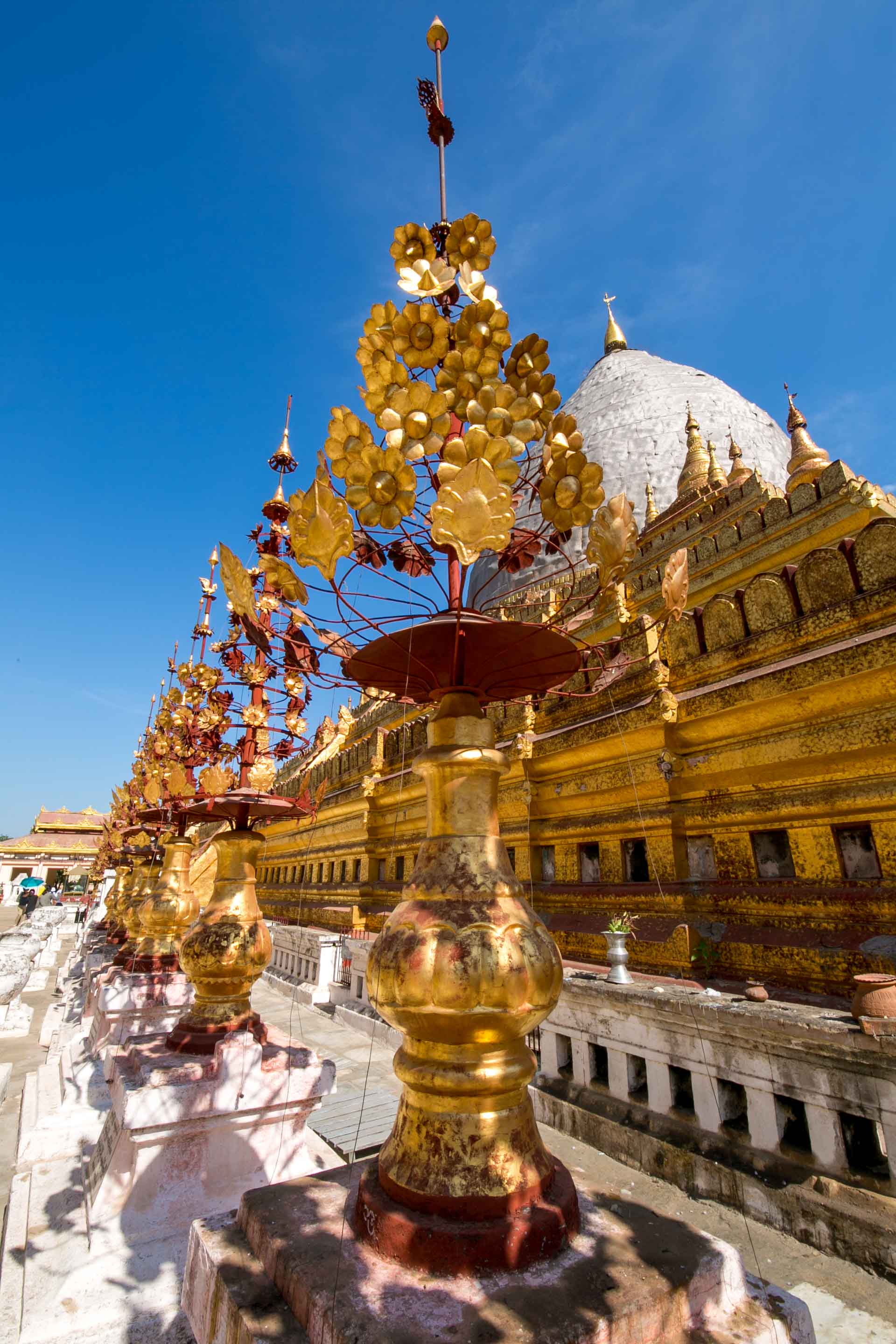

The other must see place to visit is to the Shwezigon Pagoda. Built in 1090 it’s one of the oldest and iconic monuments in Old Bagan. What makes it stand out is the gold plated pagoda sparkling in the sun. Unfortunately, the gold was under the tarp due to renovations going on. Standing at 49 meters it’s impossible to miss. The design has been so popular its been replicated in many other regions of Myanmar. Since the pagoda is home to a number of sacred Buddhist relics, it’s become a major pilgrimage site for Buddhists.
There’s an interesting history about the Shwezigon Pagoda too. It was commissioned by King Anawrahta the leader who founded the Bagan Kingdom in 1044. After his conversion to Theravada Buddhism by a Buddhist monk from the Thaton Kingdom he went on a massive temple building campaign to leave his legacy for future generations. According to the legend, the location Shwezigon Pagoda was chosen by a white elephant carrying a sacred relic on his back. Construction began circa 1059 and finished roughly 30 years later during the reign of King Kyanzittha.
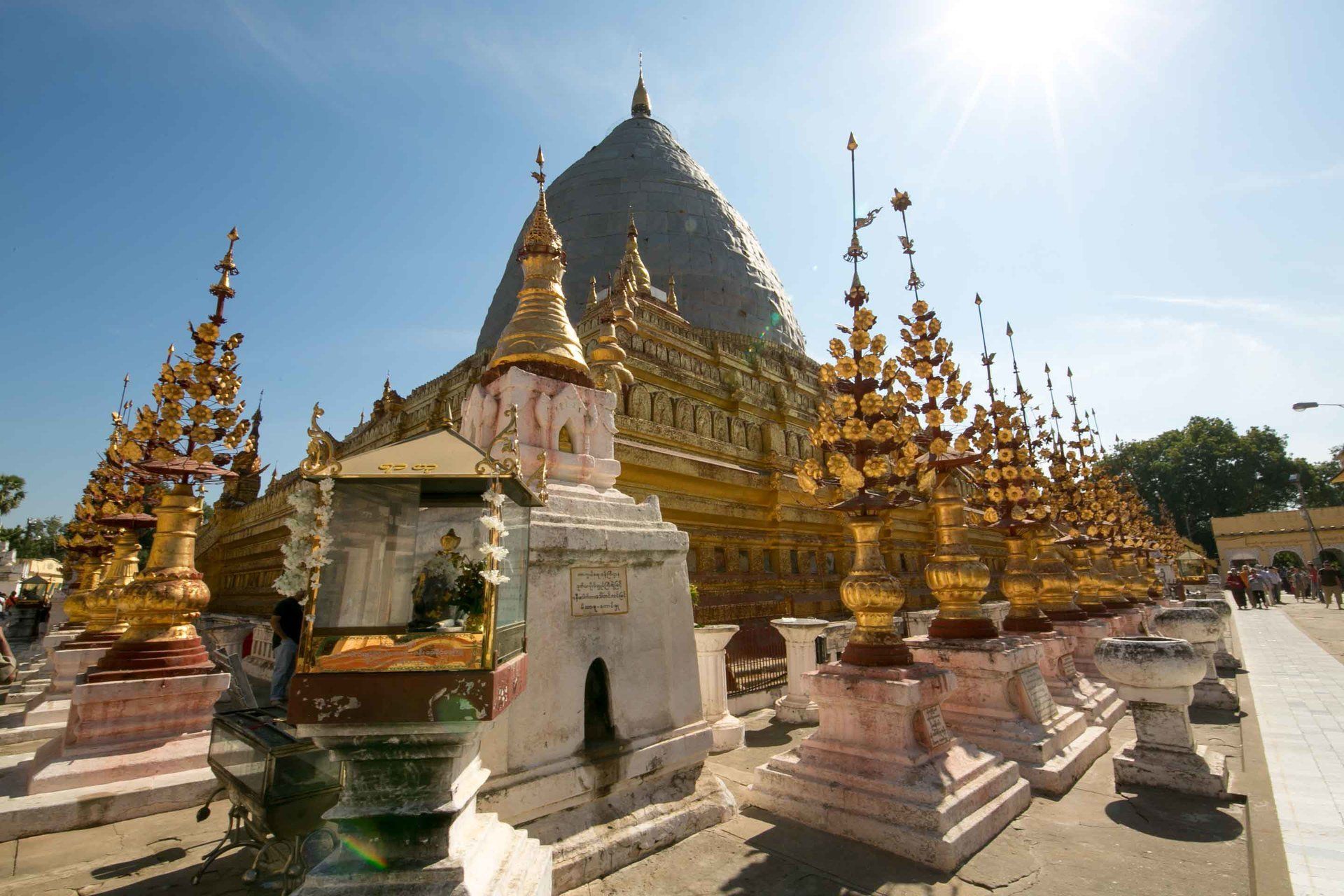
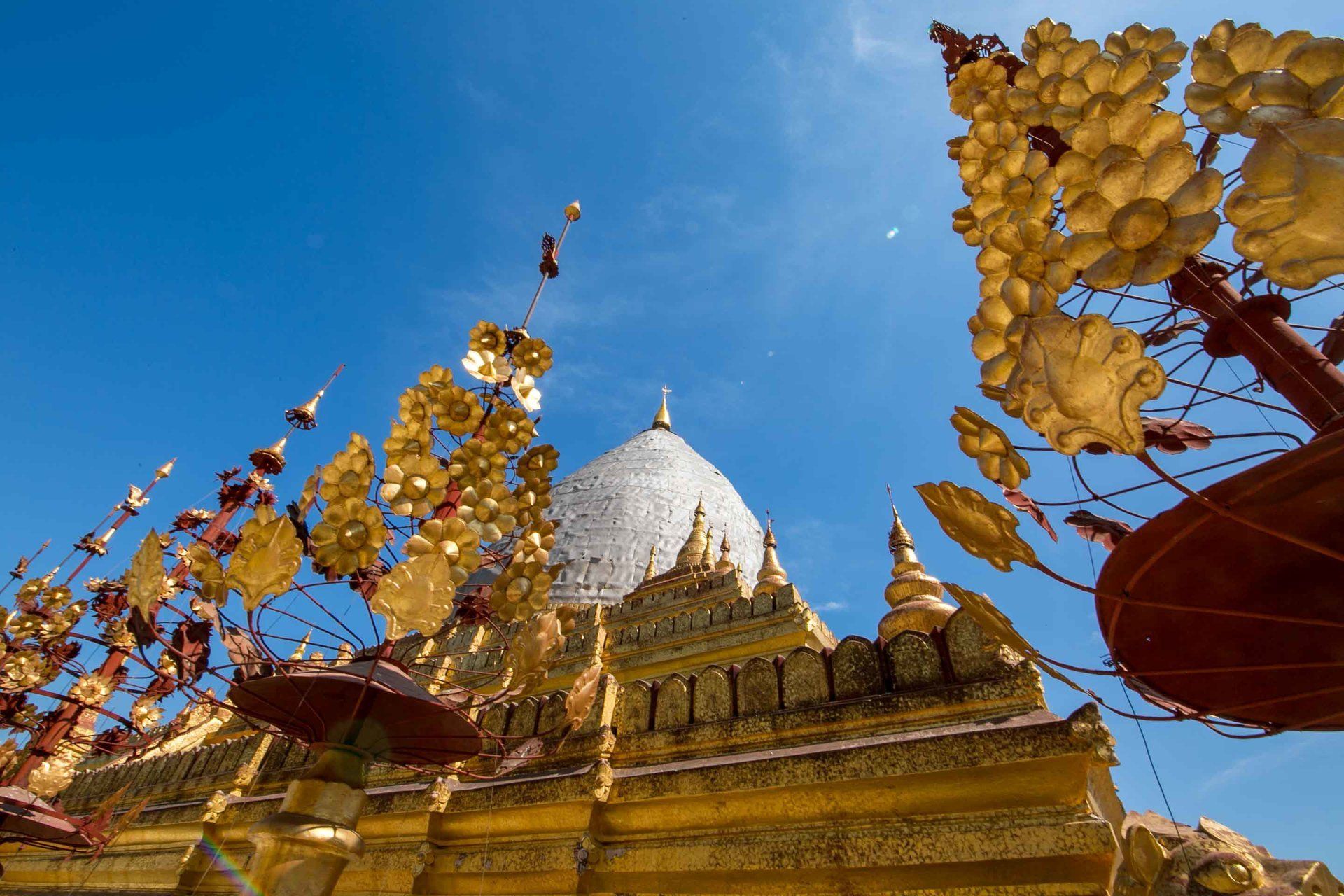
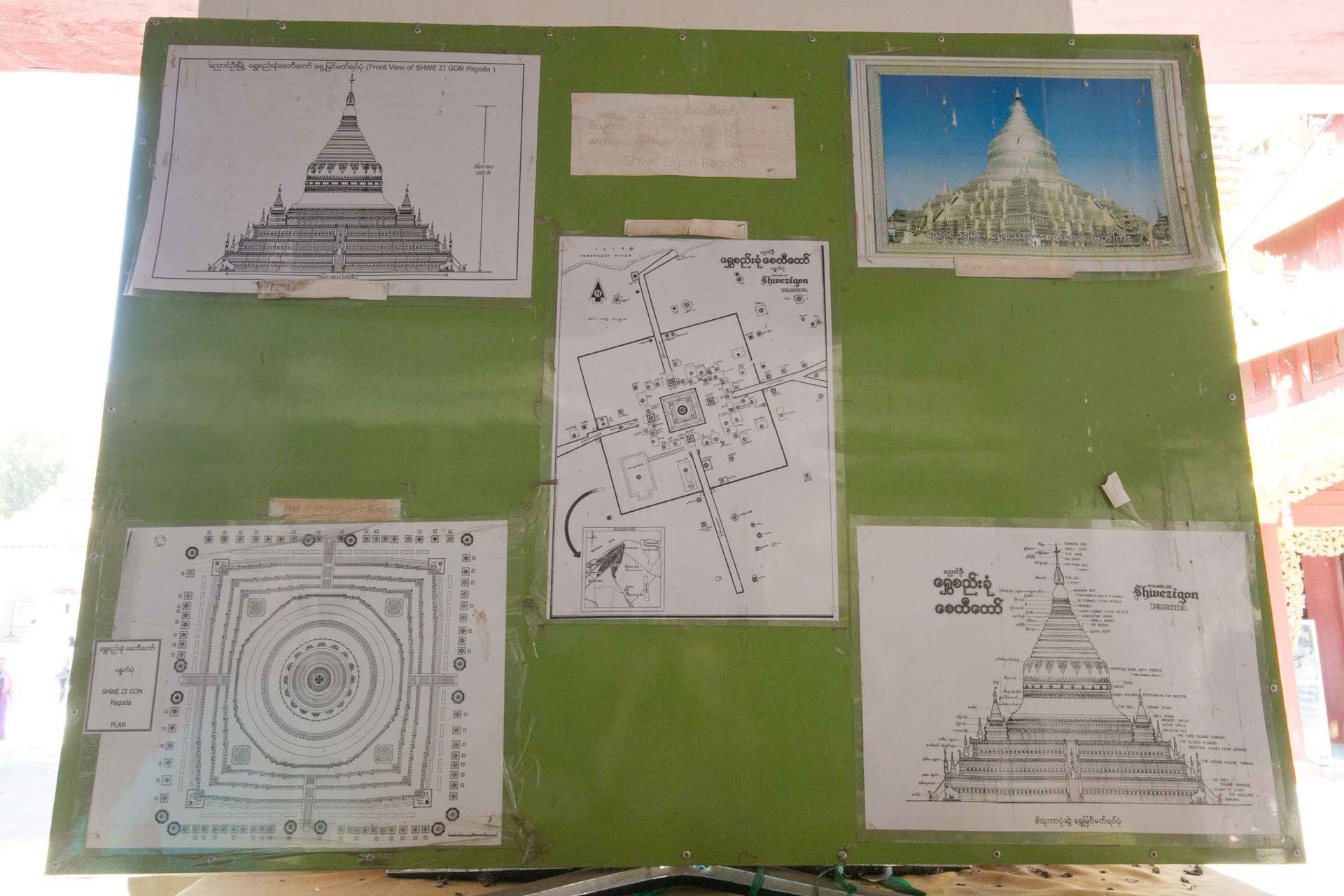
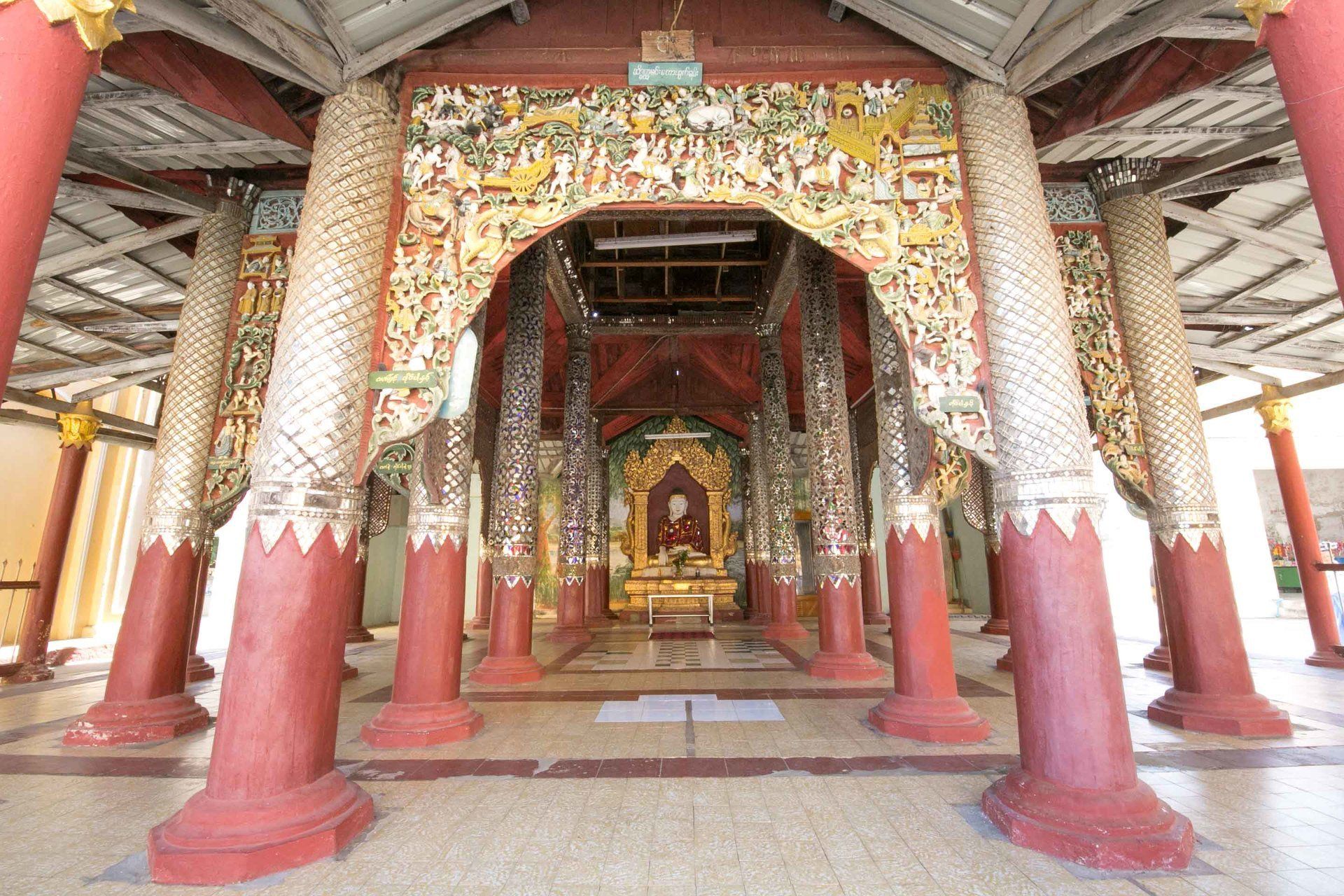
Due to the popularity of this place expect very large crowds and you’ll have to be patient if you want a good photo with few people in it. There are plenty of small structures here with interesting things to look at too. If you got a wide lens camera well this is the time to use it. There are a number of small and intricate sculptures along the pagoda that definitely photo worthy.
Apparently, a festival is held here too. It occurs on the 9th month of the Burmese calendar (December) and attracts thousands of participants. It traces it roots to the month the devoted pay their respects to the ancient Nats (spirits), before Theravada Buddhism became the main religion in Myanmar.
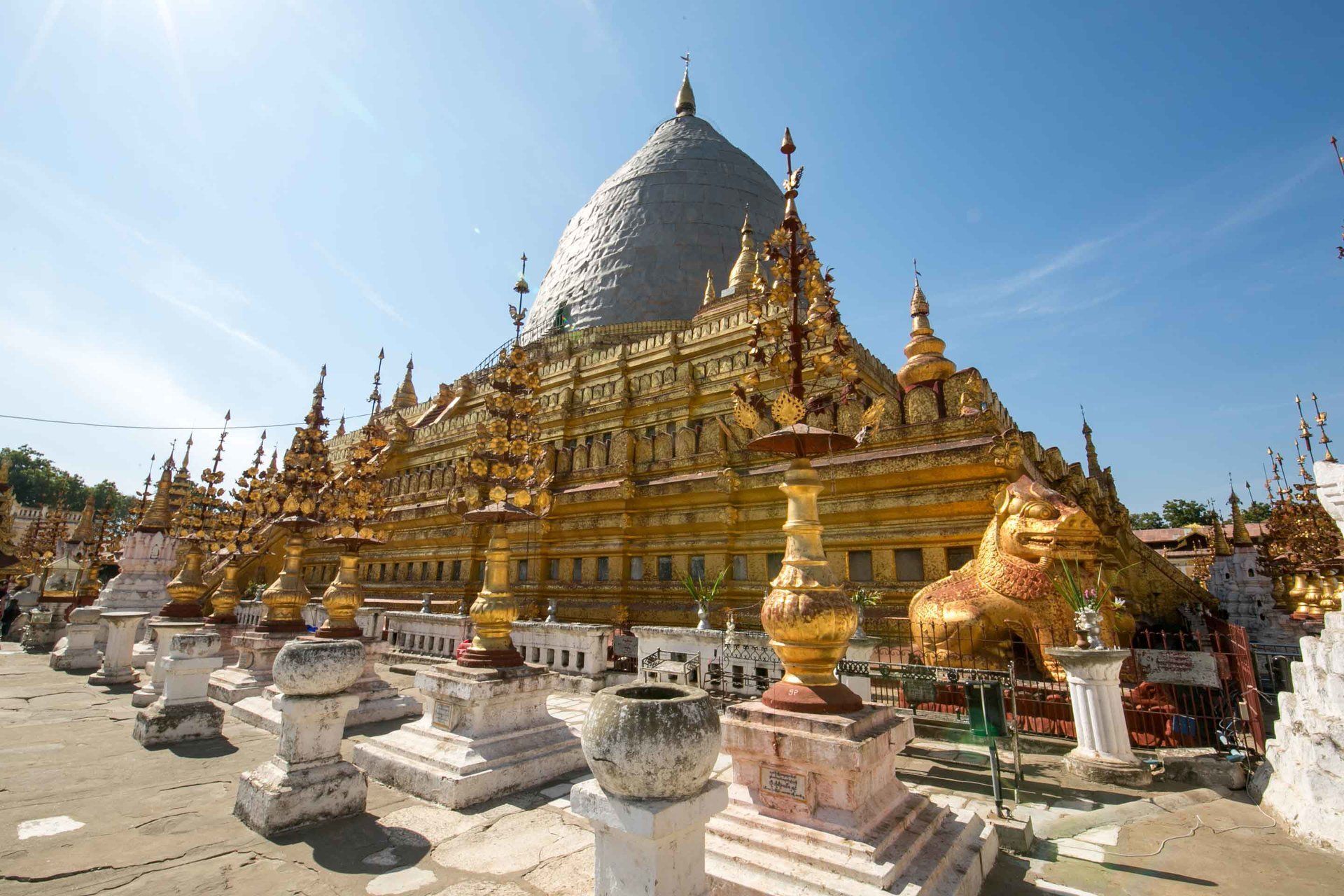
Just a reminder, this is considered a holy place and to dress appropriately here. You don’t have to remove your shoes here either. Enjoy the scenery because it’s gorgeous and the people are friendly. Most of the major temples are open from dawn until dusk. If you visit the not so popular ones they may be locked and the locals will open it for you but expect to give them a small tip.
These are the two places I went with my tour guide. I would highly recommend spending at least 3 days in the Bagan Archaeological Zone and do one day with a tour guide to learn a lot of the history and culture and then spend the other two with a bicycle or scooter discovering on your own. This place is massive so have fun getting lost but don’t worry crime or getting stranded. As I mentioned before, there’s only supervision at the major temples so you can go anywhere you want and climb anywhere and everywhere. There are plenty of options for transportation. You can take a bicycle, electric scooter, taxi, and even go by ox cart! If you’re not in a hurry I’d recommend the ox cart because the pace is slow and it forces you to admire the surroundings.
Happy traveling.
